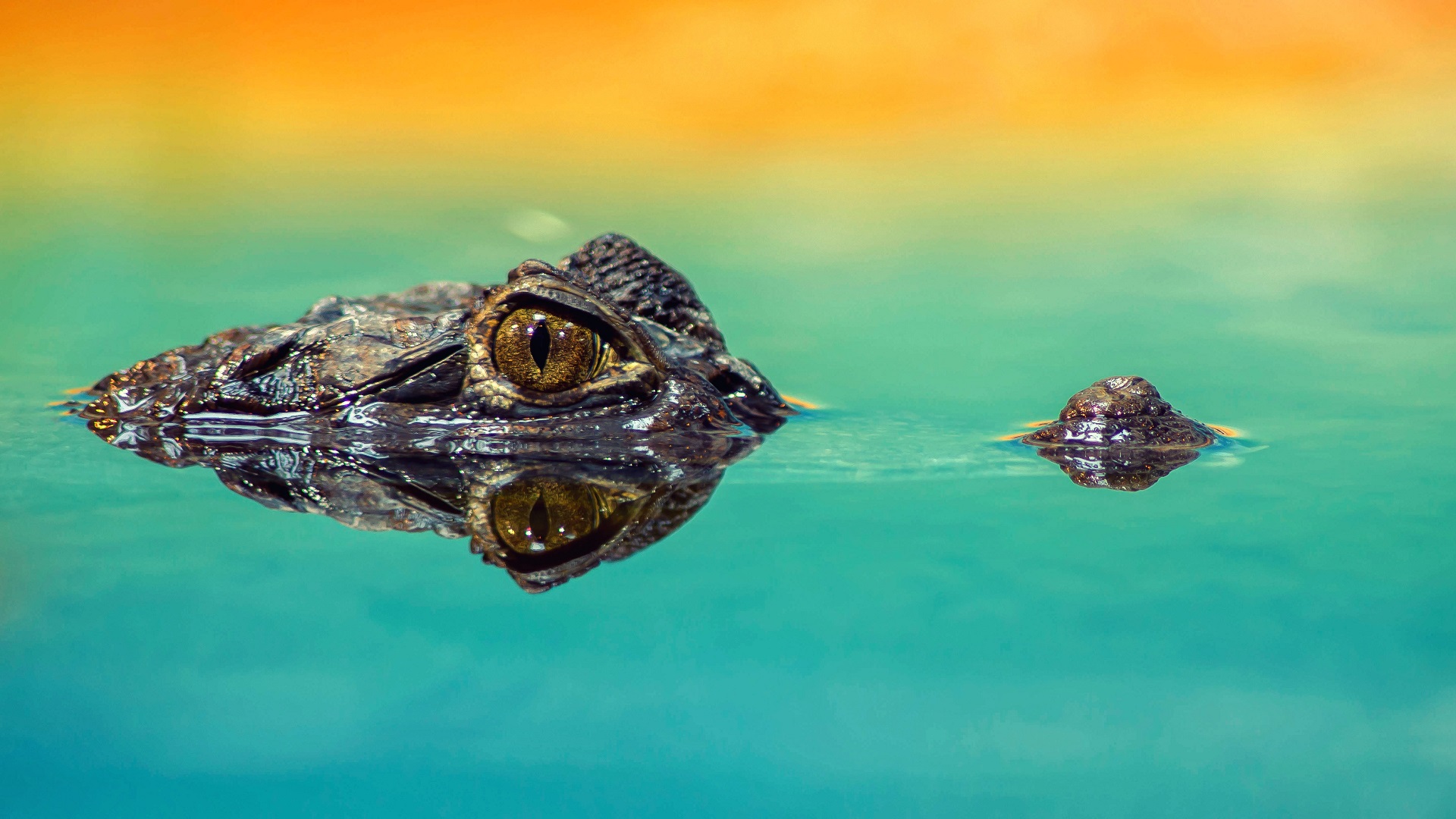A female crocodile can reproduce without the help of a male. This faculty, called parthenogenesis, was observed for the first time in this species.
Stories about births without fertilization called “virgin births” have been told in all mythologies. But this type of birth can also exist in nature.
Last month, the first evidence of a virgin birth in crocodiles was reported in a female American crocodile living in captivity, Crocodylus acutus, who lived alone for 16 years in a zoo in Costa Rica. She laid 14 eggs, seven of which appeared to be viable and were artificially incubated. The eggs did not hatch and the contents of six of them were identifiable. But one contained a fully formed fetus that was genetically identical to its mother and showed no evidence of male input.
This is not the first case of virgin birth in the animal kingdom. Baby lizards, snakes, sharks and birds, including the California condor, have all been seen hatching from unfertilized eggs.
How to explain these births without fertilization?
Species can reproduce either sexually, by combining genetic material from two parents, or asexually. The first living beings were asexual and essentially made clones of themselves. Plants can reproduce in the same way, including by division, budding and fragmentation.
However, this mode of reproduction produces many genetically identical organisms, and a lack of genetic variation means individuals cannot adapt to changing conditions. If the environment is bad for one member of a species, it is bad for all and can lead to extinction.
In species such as humans, sexual reproduction requires sperm to fertilize eggs and create an embryo. In terms of evolution, sexually reproducing species can be considered more advanced, as their offspring are genetically diverse, with unique gene combinations coming from their parents.
This diversity can be important if a species is to adapt. It also reduces unfavorable genetic mutations, which are often associated with inbreeding (when close relatives mate).
Virgin births are a form of asexual reproduction, as they do not require male genetic information. But, unlike other forms of asexual reproduction, they require an egg. Unfertilized eggs are often produced by females – like those of domestic hens – and if unfertilized eggs are not eaten, they eventually perish. But there is an exception. Births without fertilization, known as parthenogenesis, occur when an unfertilized egg develops into an embryo.
This embryo will not necessarily be genetically identical to the mother – it depends on how the egg develops. Parthenogenic young may be full clones or half clones of the mother. Half-clones are produced when embryonic cells divide in two before multiplying. Full clones are created when an embryo multiplies whole cells.
Half-clones therefore have even less genetic diversity than full clones. Not only do they lack the genetic diversity of organisms resulting from sexual reproduction, but they inherit only half of the genetic diversity from their mother.
Some species, called facultative parthenogenetics, alternate between sexual and asexual reproduction. They rely primarily on sexual reproduction, but may resort to asexual reproduction if necessary.
The virgin birth, which usually gives birth to female offspring, would be triggered in several situations. For example, when there are not many males around. This phenomenon is often observed in animals in captivity, notably in the tiburo hammerhead shark, which are kept in single-sex enclosures.

Gene inheritance
Even in the presence of males, females can resort to parthenogenesis. For example, last year a female zebra shark gave birth to several offspring whose DNA did not match any of the males in the Chicago aquarium where she lived, baffling researchers.
If environmental conditions are poor, asexual reproduction involves less effort than sexual reproduction, as the female does not need to waste time and energy finding a mate. For example, many cases of parthenogenesis have been found in geckos, snakes, and lizards that live in harsh, dry climates, such as at high altitudes.
Females may also reproduce asexually to take advantage of a favorable change in conditions. The rusty crayfish is native to the United States but was introduced to Europe where the climate is milder. It has invaded many European rivers by reproducing asexually. Although many invasive species are larger and stronger than native species, parthenogenesis is another factor that can contribute to their invasion.
Genetic testing technology, which makes it easier to identify parthenogenesis, is helping researchers discover that more and more species are capable of virgin birth. The revelation of parthenogenesis in the American crocodile suggests the existence of a common ancestral connection between archosaurs, or dominant reptiles, which include dinosaurs, pterosaurs (flying reptiles), birds, and crocodiles. As parthenogenesis occurs in birds and crocodiles, it is possible that dinosaurs also had virgin births.
This Virgin Crocodile Mother is eerily reminiscent of a scene from Jurassic Park where scientists say there is no need to worry, that they can control the population of the park by ensuring that all dinosaurs are born female, so that there will be no young products naturally.
But as the film’s chaos theory expert, Dr. Ian Malcolm (played by Jeff Goldblum) puts it, “life always finds a way.”

Louise Gentle, Principal Lecturer in Wildlife Conservation, Nottingham Trent University
This article is republished from The Conversation under a Creative Commons license. Read the original article.
If you liked this article, you will like the following ones: do not miss them by subscribing to Numerama on Google News.
